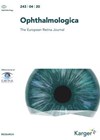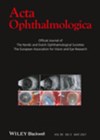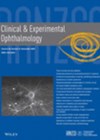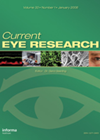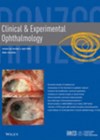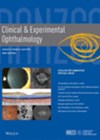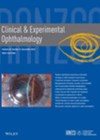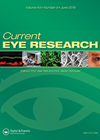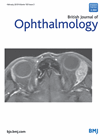
Journal Reviews
Cataract extraction and microperimetry
In this study, the authors assessed retinal sensitivity before and after cataract extraction, in an effort to understand how lens opacities may affect microperimetry results in glaucoma and macular diseases. Thirty patients awaiting cataract extraction were examined and their lens...
Suture-less flanged IOL fixation vs. conventional sutured SF in IOL dislocation
The authors report the analysis of a prospective, comparative cohort study on 103 consecutive patients (103 eyes) with intraocular lens (IOL) dislocation who underwent vitrectomy with IOL removal and sutured scleral fixation (SF) (53 eyes) or flanged IOL fixation (50...
Wet AMD outcomes post cataract surgery
The authors present the findings of a retrospective study looking at the progression of wet age-related macular degeneration (AMD) in patients who underwent cataract surgery. They recruited a series of 111 patients of which 38 were men and 73 were...
Surgical outcomes of isolated medial rectus palsy
Isolated medial rectus is a rare clinical entity. This prospective study of 32 patients from China showed that this was caused most commonly by iatrogenic injury (43.75%), trauma (37.50%) and congenital (18.75%) causes. An average of 60 ±25 prism dioptres...
Topical nonsteroidal ant-inflammatory drugs (NSAIDs) in patients undergoing cataract surgery
Inflammation is a major risk factor for the development of cystoid macular oedema (CMO) after cataract surgery, leading to breakdown of the blood-retina barrier. There is a correlation between severity of CMO and level of postoperative inflammation. Laser flare meter...
Practical application of cataract risk stratification
This study assessed the practicability of a risk stratification system, the New Zealand Cataract Risk Stratification (NZCRS) in a major teaching hospital. The scoring system was as follows: three points for Dense cataract, pseudoexfoliation (PXF), phacodonesis, previous vitrectomy and only...
Preoperative anxiety levels and pain during cataract surgery
Increased anxiety has been shown to be associated with greater pain in a number of procedures. In this observational, non-interventional study, the authors sought to evaluate the correlation between pain with phacoemulsification surgery (under topical and intracameral local anaesthesia) and...
Cystoid macular oedema following cataract surgery
This review covers the history, incidence, diagnosis, risk factors, pathophysiology and medical management of postoperative macular oedema (PCMO), with a particular emphasis on key contemporary studies and novel observations. The authors revisit the incidence of well-established risk factors including intraoperative...
Lens surgery in patients with lens subluxation misdiagnosed as primary angle-closure glaucoma
Lens subluxation can be caused by many conditions including Marfan syndrome and other hereditary conditions, and blunt trauma. Lens displacement can cause pupillary block and angle closure. This is commonly misdiagnosed as primary angle closure glaucoma (PACG), which can lead...
Effect of cataract surgery on inflammation control and vision in uveitis patients
This retrospective longitudinal study from Moorfields, London, UK compared uveitis recurrence rates and vision loss in 309 eyes of uveitis patients post cataract surgery to 300 control uveitis patients. Cataract is a common complication associated with uveitis and leads to...
Diclofenac versus Bromfenac after cataract surgery
Non-steroidal anti-inflammatory drugs (NSAIDs) are commonly used after cataract surgery to reduce inflammation and cystoid macular oedema (CMO). Diclofenac 0.1% is used three to five times daily for 28 days and Bromfenac 0.09% twice daily for 14 days postoperatively. The...
Temporal versus nasal clear corneal incisions
This is a prospective randomised study of 100 patients’ left eye having undergone phacoemulsification either by a 2.4mm nasal clear corneal incision (CCI) group or temporal CCI group. The corneal astigmatic changes were compared between groups by power vector analysis,...


